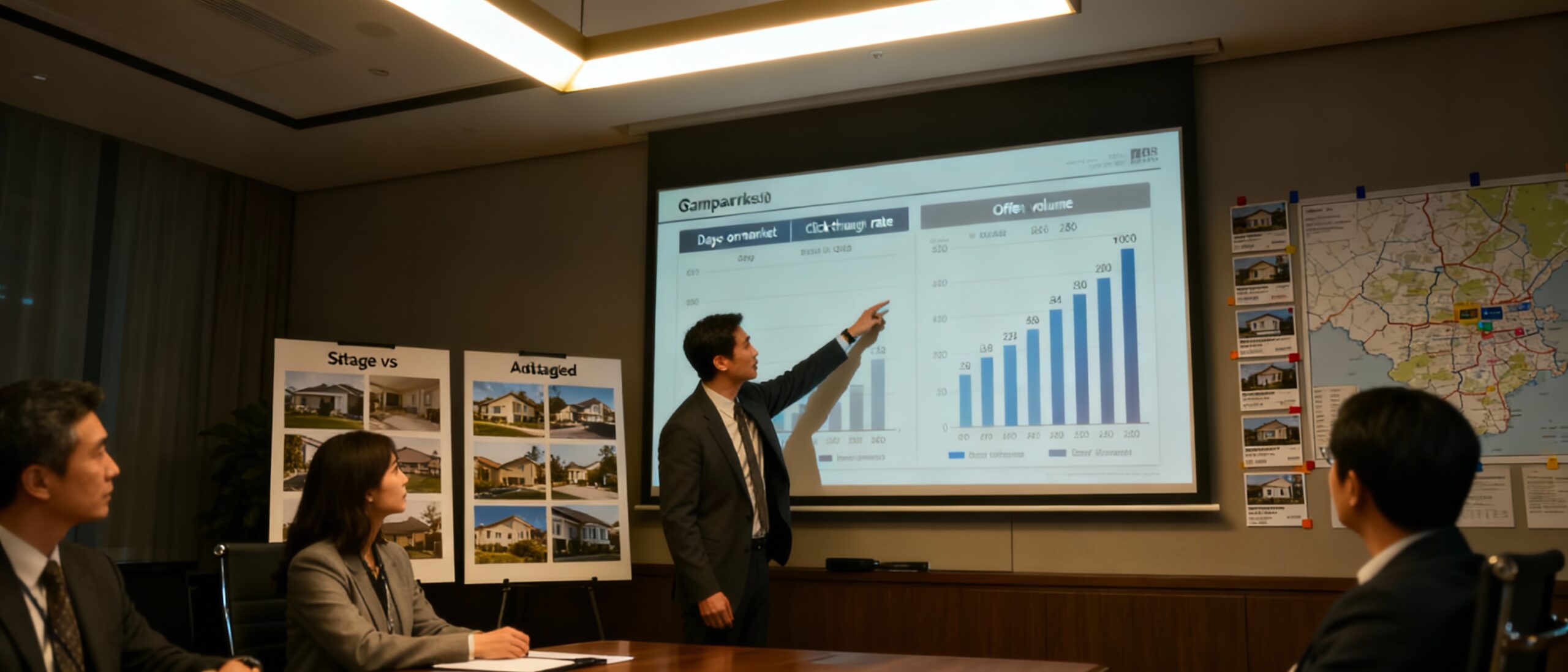Distribution and SEO: Turn Staged Assets into Traffic, Leads, and Offers
Even the most gorgeous staged photos will underperform if they're buried on page three of a portal or never leave the MLS. Distribution is the force multiplier. Package your assets for every channel that matters—MLS-compliant images, a slider-equipped landing page, a 30-second vertical tour for social, and a broker-friendly share kit. Great staging sells the promise; great distribution sells the house.
Think like a media team. Build a property page with fast load times and a clean URL structure, then lean into structured data and Answer Engine Optimization (AEO) so listings show up in AI-powered results across Google and Bing. Pair that with AI Content Marketing: a short market update for the blog, a neighborhood guide carousel, and an email drip that highlights the top three rooms with staged callouts. It's storytelling with an engineering backbone.
"Great staging sells the promise; great distribution sells the house"
Automation closes the loop. Use light-touch AI automation to generate variant captions, alt text, and platform-specific crops without fatiguing the design team. This is where "AI employees" shine for brokerages—reliable, consistent, always-on. Teams deploy AI Agents to orchestrate tasks across listing portals, social schedulers, and CRM triggers so every new media asset finds its audience within minutes, not days.
Channels still matter. Instagram Reels and TikTok punch above their weight with day-to-dusk transformations, while LinkedIn quietly drives broker-to-broker shares for higher-end inventory. Retarget site visitors who linger on the before/after slider, and run a 14-day paid burst synced to open house weekends. Nail your first 72 hours and you'll usually feel it in showing requests by day three.
Field Evidence: What Works and Why
Data is theory wrapped in numbers; case studies are the receipts. When we layered the techniques above into live listings across different price bands and regions, the patterns stayed remarkably consistent: better engagement, faster showings, cleaner offers. The surprises came from distribution—specifically, how quickly a disciplined content package could tilt the velocity curve.
Miami Water-View Condo Success
In Miami, a water-view condo sat for six months with bland, empty photos. The relaunch used photorealistic renderings, a home office vignette, and a day-to-dusk exterior. We paired that with an interactive slider on a dedicated URL, short-form vertical video, and retargeting. Showings picked up within 48 hours. The condo sold in two weeks at asking, with 2.1x more showing-to-offer efficiency than the original campaign.
In the Pacific Northwest, a suburban four-bedroom blended demographic targeting with soft transitional styling and true-to-scale space planning. The brokerage added a "renovation preview" for the dated kitchen (clearly disclosed) and pushed the assets via email to their buyer list. Engagement spiked, but the quiet hero was alt text and schema that improved organic visibility. The home moved after 10 days at a price the sellers had written off two months earlier. Different region, same throughline: execution beats wishful thinking.
Now, a caveat: virtual staging won't fix the wrong price or a train line 30 yards from the back fence. But when the fundamentals are fair, it unlocks the buyer's imagination at scale. A consistent pipeline—brief, render, QA, disclose, distribute—turns a single listing into a content engine that compounds across a portfolio. Tie that engine to light automation, and you've got leverage on tap.
If buyers can't imagine their life in the space within five seconds, the listing will lose them. Make those five seconds count—with images that invite, copy that guides, and distribution that actually gets your work seen. For teams ready to scale these processes across multiple markets, exploring comprehensive Service Sectors can provide the infrastructure needed to maintain quality at volume. Whether you need implementation guidance or want to discuss how these techniques fit your specific market, don't hesitate to Contact Us for a strategic conversation.



